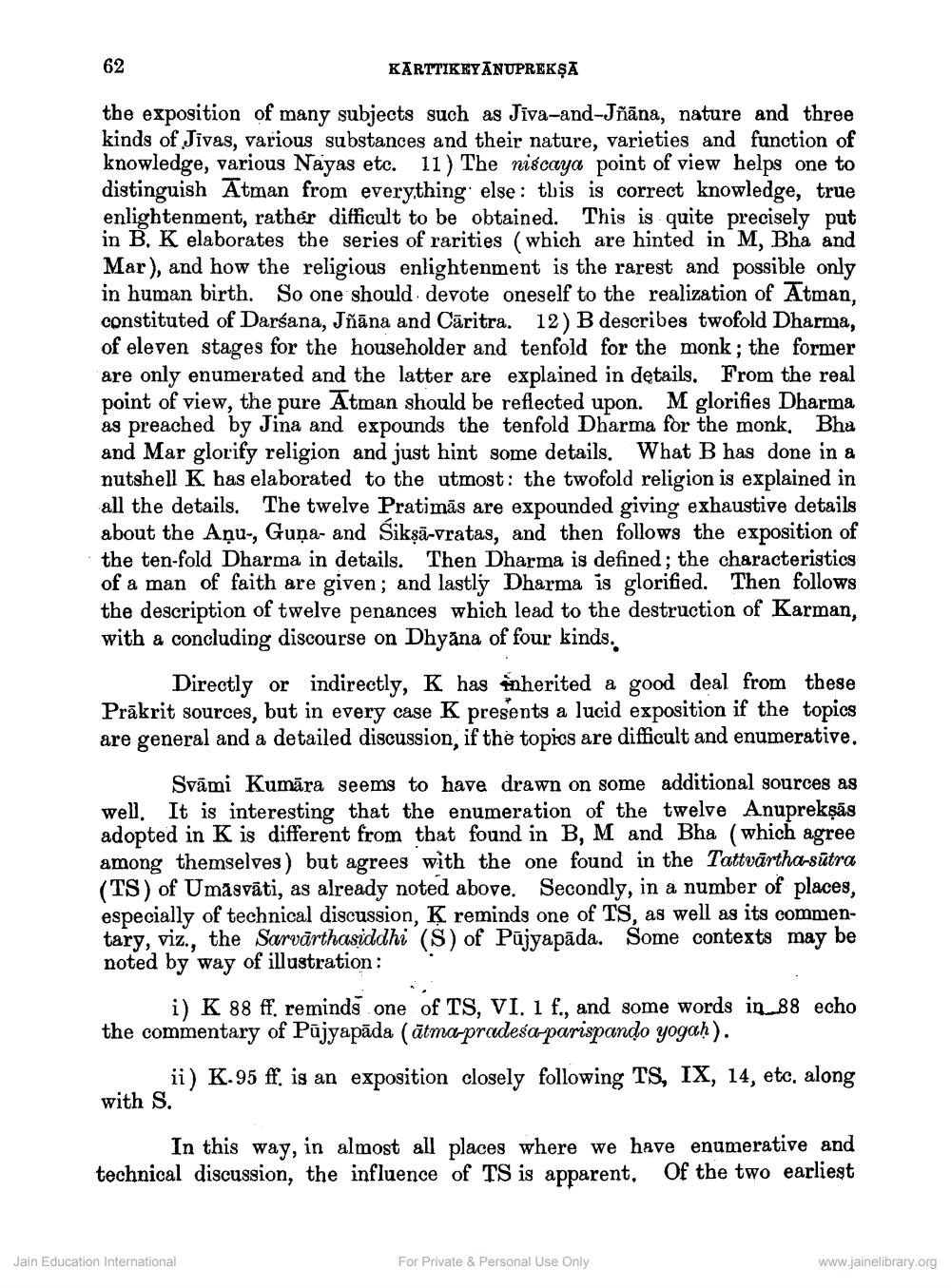________________
62
KĀRTTIKEYANUPREKSA
the exposition of many subjects such as Jiva-and-Jñāna, nature and three kinds of Jivas, various substances and their nature, varieties and function of knowledge, various Nayas etc. 11) The niscaya point of view helps one to distinguish Atman from everything else : this is correct knowledge, true enlightenment, rather difficult to be obtained. This is quite precisely put in B, Kelaborates the series of rarities (which are hinted in M, Bha and Mar), and how the religious enlightenment is the rarest and possible only in human birth. So one should devote oneself to the realization of Atman, constituted of Darśana, Jñāna and Căritra. 12) B describes twofold Dharma, of eleven stages for the householder and tenfold for the monk; the former are only enumerated and the latter are explained in details. From the real point of view, the pure Atman should be reflected upon. M glorifies Dharma as preached by Jina and expounds the tenfold Dharma for the monk, Bha and Mar glorify religion and just hint some details. What B has done in a nutshell K has elaborated to the utmost: the twofold religion is explained in all the details. The twelve Pratimās are expounded giving exhaustive details about the Aņu-, Guņa- and Sikşā-vratas, and then follows the exposition of the ten-fold Dharma in details. Then Dharma is defined; the characteristics of a man of faith are given; and lastly Dharma is glorified. Then follows the description of twelve penances which lead to the destruction of Karman, with a concluding discourse on Dhyāna of four kinds.
Directly or indirectly, K has fnherited a good deal from these Prākrit sources, but in every case K presents a lucid exposition if the topics are general and a detailed discussion, if the topics are difficult and enumerative.
Svāmi Kumāra seems to have drawn on some additional sources as well. It is interesting that the enumeration of the twelve Anupreksās adopted in K is different from that found in B, M and Bha (which agree among themselves) but agrees with the one found in the Tattvārtha-sūtra
TS) of Umāsvāti, as already noted above. Secondly, in a number of places, especially of technical discussion, K reminds one of TS, as well as its commentary, viz., the Sarvärthasiddhi (S) of Pūjyapāda. Some contexts may be noted by way of illustration:
i) K 88 ff. reminds one of TS, VI. 1 f., and some words in_88 echo the commentary of Pūjyapāda (ātma-pradesa parispando yogaḥ).
ii) K.95 ff. is an exposition closely following TS, IX, 14, etc, along with S.
In this way, in almost all places where we have enumerative and technical discussion, the influence of TS is apparent. Of the two earliest
Jain Education International
For Private & Personal Use Only
www.jainelibrary.org




